No one likes sticky beads forming on top of their pie, or a damp sticky layer between pie filling and topping, especially after making the effort to create something special. Aunt Hen had a solution. She discovered Meringue That Won’t Weep and she still loved to share the recipe with friends and family well into her eighties.
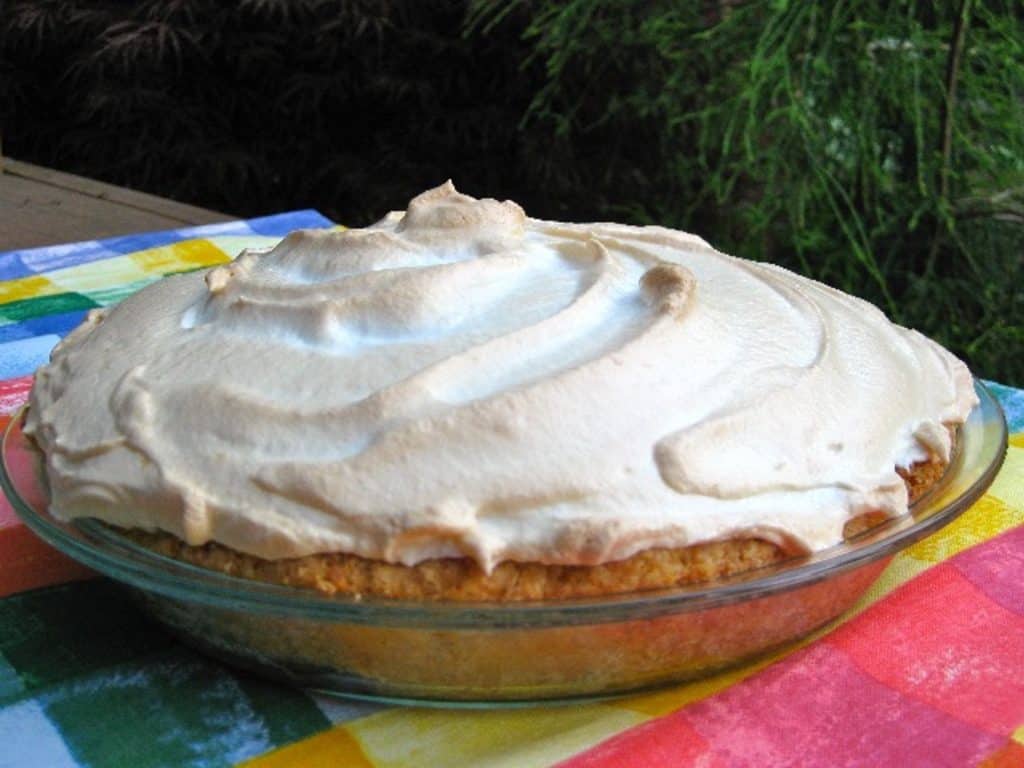
The Flavor of Summer
The long spell of hot weather that was hovering over the Pacific Northwest has broken now. The skies are bright and brushed with wispy clouds and the morning air feels cool against my skin. That cooler air beckons me back into the kitchen. Still the heat is simmering in my mind as I stir my kitchen memories on a quiet Monday morning.
When I was a child something was always happening in the kitchen, no matter the ambient temperature. Even on the hottest summer days there was food to prepare and people to be fed. Fried chicken takes a skillet of hot grease to transform it into crisp tender mouthfuls of southern perfection. Corn on the cob takes a kettle of boiling water to bring out its bright color and juicy sweetness. Even summer salads made with pasta or potatoes must be prepared on the stove top.
Many a dreamy summer dessert that is regarded as “cool” or “tart” also spends some time in a hot oven. Think of Baked Alaska, or the mountains of foam piled invitingly high on top of a Lemon Meringue Pie. Even these refreshing desserts need some heat to set those golden peaks. The alchemy of the kitchen is almost always hot work! To delight and nourish family and friends, someone has to do it. When I was a girl that someone was Aunt Hen.
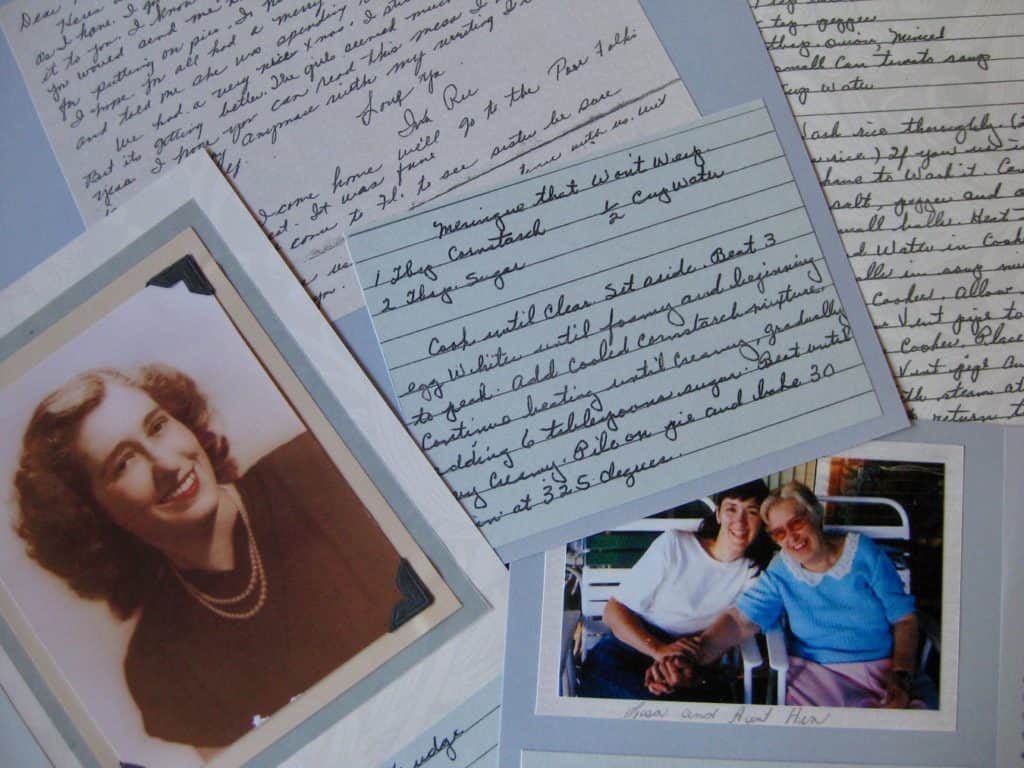
Kitchen Alchemy
Of course there are dishes that can both feed a family and avoid the heat. These days if you can’t stand the heat there is no shame in getting out of the kitchen. Times have definitely changed.
Back when I was a girl those options were fewer. Produce from the garden needed to be cooked or preserved. Having grown up on a farm during the depression, and ever thankful for its abundant produce, Aunt Hen was reluctant to let any food go to waste. What’s more, relying on what are now common alternatives to cooking an evening meal were then thought to reflect a lazy character or a lack of thrift. Besides packaged foods and deli selections were pricier than home cooked, and take-out was harder to come by.
I think my aunt considered those options beneath her dignity for much of her life. My uncle worked hard and when he was alive Aunt Hen saw it as her responsibility to feed him well. To her that meant preparing hot home cooked meals, regardless of the season. She took pride in her skills in the kitchen and the pleasure others took in the food she prepared.
Later in life she had my brother, my dad and me to feed. Despite those changes in circumstances, she still took her role as the family cook seriously. Even after my brother and I moved away from home, summer visits to Aunt Hen’s often found her standing in her fragrant, steamy kitchen. There she would be stirring something over the hot stove, sweat rising on her brow as a box fan at the periphery of the room blew a scant breeze her way.
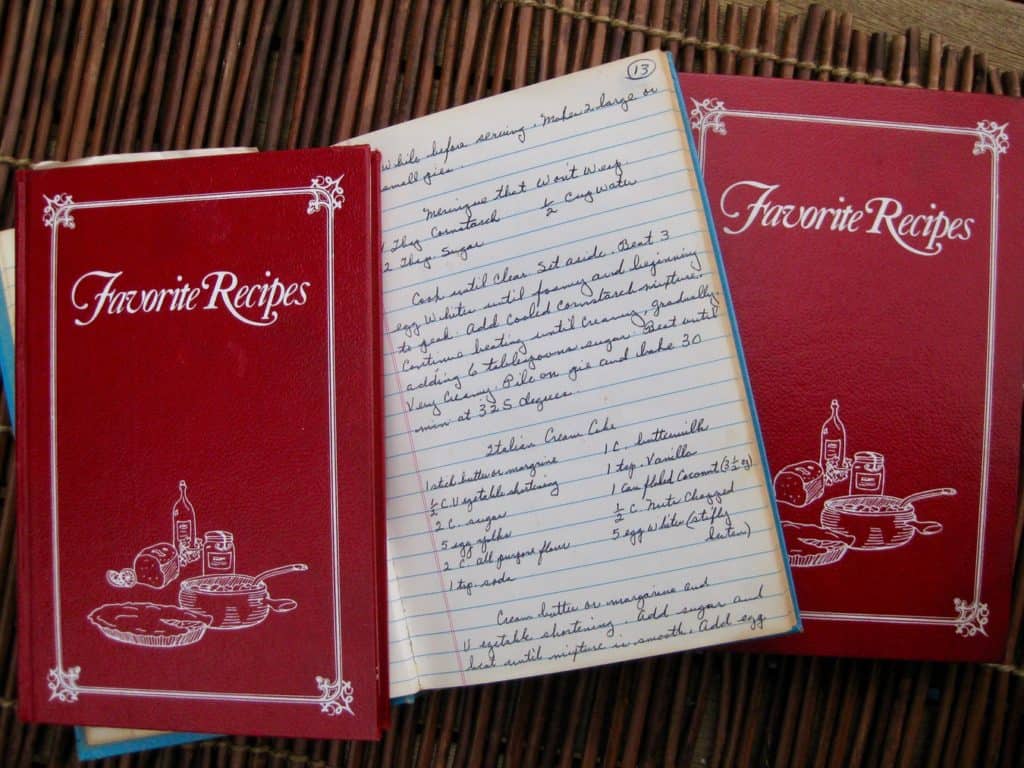
Avoiding Tears With a No-Weep Meringue
On one hot summer morning she offered to make a pie for me to take to my grandfather’s house later that day. As she cooked she carefully showed me how she made a meringue topped pie. We cooked the filling and smoothed it into the waiting pie shell. Then we beat the egg whites until frothy and followed one of her favorite recipes to create an impressive meringue that she confidently told me, “Would Not Weep!”
Back then, I wasn’t even aware that meringue could tend toward weeping. Pies were not my favorite dessert and I didn’t give much thought to their personal problems, to what made a pie perfect or what caused it to be a disaster.
Now I understand that weeping meringue is an age-old problem. No one likes sticky beads forming on top of their pie, or a damp sticky layer between pie filling and topping, especially after making the effort to create something special. No, weeping meringue can be a real challenge to bakers, especially when it is humid. And believe me, there are few places more humid than Aunt Hen’s kitchen, near the banks of the Ohio River, on a summer’s day.
While weeping meringue is a real problem, Aunt Hen had a solution. She had discovered a No-Weep Meringue and she loved to share the recipe well into her eighties. Even after she had moved to a nursing home, Aunt Hen would call me and ask me to look up the recipe for her. She would direct me to her cookbooks and have me pull out the blue one. With my heart melting in my chest, I would gently open her old cookbook to page 13 and read aloud the handwritten recipe that she eagerly wanted to share with a new friend:
Meringue That Won’t Weep
Course: DessertCuisine: AmericanDifficulty: Easy1
pie15
minutes30
minutes45
minutesWeeping meringue is an age-old problem, but Aunt Hen had a solution. She discovered a recipe for No-Weep Meringue that she loved to share.
Ingredients
1 Tablespoon (7.5 grams) cornstarch
2 Tablespoons (25 grams) sugar
1/2 cup water
3 egg whites (preferably at room temperature)
6 Tablespoons (75 grams) sugar
Directions
- Stir together cornstarch, sugar and water in a small saucepan. Cook mixture over medium low heat, stirring continuously, until thick and translucent, about 3 to 5 minutes. (The mixture will begin to bubble and thicken but may remain cloudy). Set aside.
- Beat egg whites until foamy and beginning to peak (At this stage the meringue forms a soft mound or a soft peak that quickly falls over as the beaters are pulled out of the mixture). Add the cooled cornstarch mixture.
- Continue beating the egg whites while gradually adding 6 Tablespoons of sugar. Beat until very creamy. (At this stage the meringue will be glossy and the peaks will hold their shape as you pull the beaters from the mixture. If you are using a handheld mixer, turn the mixer upside down. The peak of the meringue left on the beater should remain upright).
- Pile meringue on pie filling (this Lemon Pie Filling is a good choice) spreading it to touch the edge of the crust all around.
- Bake 30 minutes at 325F, or until the top is kissed with a golden brown color.
- Serve with confidence and enjoy!
Notes
- Recipe Source: From page 13 of Aunt Hen’s “Favorite Recipes” (the blue volume).

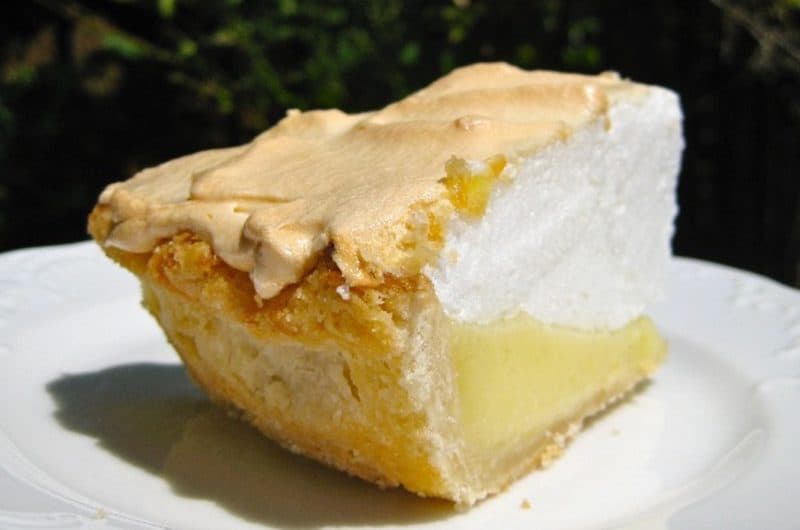

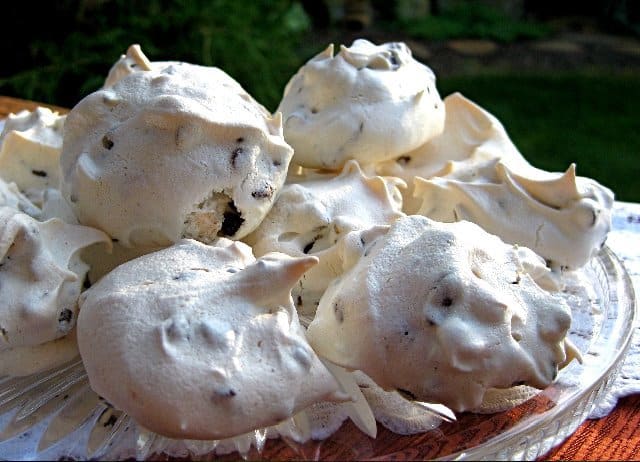




I made the lemon pie filling that was with the no weep meringue. It was quite involved with so many ingredients and steps that I measured and labeled everything first. Same thing with the meringue ingredients.
Pie filling was great and set up wonderfully. Meringue was a bit different than any I had ever made but willing to do it in hopes of no weeping. Meringue made a very nice thick topping. Looked great and browned perfectly. It was too late to wait up for it to cool so waited until morning. No shrinking! Wohoo!! Cut into pie and juice, water or tears begin to run! Crust at the edges was already soggy but not the bottom.
This was a test pie and now I don’t know if I’m going thru all that again for another try. I know there has to be an easiest filling if the issue is the meringue not the filling. So I have to decide if meringue is worthy of giving another chance.
Hi Sandy! I’m sorry to hear that your pie did not turn out well. I know how frustrating that can be. It sounds like you followed the directions carefully so it is hard to know what to suggest. Some people say that the meringue needs to be piled on top of a hot filling. Others are careful to make sure the meringue topping is in touch with the crust all the way around the pie.
I hope that helps!
Hi Lisa! Omg this meringue is amazing! I’m 67 years young and have never been able to make a coconut cream pie without it weeping! And your meringue tastes good too!
Thanks so much to you and your Aunt Hen!!!
FINALLY!!!!!!! I have ALWAYS struggled with weepy meringues that are so hard to cut clean! I will use and cherish this recipe forever. Beautiful meringue. Beautiful, clean slices!
Hi Jessica. Thank you for your positive comments and for sharing your experience. I’m so glad the recipe was helpful. Aunt Hen would be delighted!
I’m making a chocolate pie and I bake the pie crust first and then add the filling and then merigue. If I bake for 20-30 minutes what does that do to the already baked crust and filling?
Great question, Marilyn! For a meringue topped pie I pre-bake the pie shell to a light golden brown. (See my recipe for Lemon Meringue Pie. A chocolate cream pie filling works the same way). After the pie shell cools add the prepared creamy pie filling and, while still warm, top with meringue. Baking the meringue for 20-30 minutes at 325F, or until the meringue is lightly golden, will not over-bake the crust or negatively impact the pie filling.
I followed the recipe exactly…it wept WHILE IN THE OVEN BROWNING! Within 3 minutes after removing it from the oven it had already shrunk away from the edges. I’ve tried many meringue recipes and I have to say this was my worst one yet. Just using a bit of cornstarch and powdered sugar instead of granulated works much better, in my opinion.
I had my doubts, but…WOW!
After a pie I made on Saturday had more tears than a room full of people peeling onions I knew I needed to give this recipe a shot. I made an identical pie today, a very warm and humid day, and no one shed a tear, not even the pie. The pie was good, the meringue came out perfect, and I’m a happy pie maker.
My reservations were based on fears that the texture and taste would be far from “real” meringue. I was worried for nothing. Except got the lacks of “tears” I couldn’t tell the difference.
Thank you for sharing your success, Ken. I’m glad to hear that Aunt Hen’s recipe worked out well for you. Cheers!
Totally went flat when added cornstarch mixture. So disappointing.
Unknown – I’m sorry to hear that your meringue went flat! I’m not sure what might have gone wrong. Did you allow the cooked cornstarch mixture to cool before adding it to the egg whites? The only other thing that comes to mind is the possibility that a little egg yolk or other fat got into the egg whites. Traces of egg yolk can prevent egg whites from beating properly.
Weeping is caused by undissolved sugar in the meringue. Beat until you cant feel the grains. The meringue needs to go on a HOT filling to stabilise the meringue.
If I were to make 2 pies would I double the cornstarch, water, and sugar to be cooked in a sauce pan. I used this recipe to make the meringue for 1 pie and it did not weep but i needed to make 2 pies one day so I did double the corn starch, water, and sugar and after I set this aside to cool it thickened like jello. I did go ahead and add to the egg whites and after browning the meringue and while removing the pies from the oven a steady clear stream of liquid came out from under the meringue on both pies. I was able to tilt both pies to remove most of the liquid. They were both salvageable. Any help is greatly appreciated.
It sounds like you may have overcooked the doubled cornstarch mixture. The cooled mixture should look like a gel but it should not be firm like set jello. Otherwise your method sounds fine. There should be no problem in doubling the recipe to make meringue for two pies. In any case, I am sorry about the liquid on your pies but it is great to hear that you were able to salvage them. I hope this technique will work better for you next time, as it did on your first attempt.
Hi, I saw your photo of the recipe for the no weep merange. I really think you should consider publishing the cookbook in it’s entirety perhaps as is…I know a lot of cookbook collectors ( me being one of them) that would jump at the chance to buy this. Best regards, Tracey.
Do you put the meringue on hot pue filling or cooled?
Hi, Kay! The pie filling doesn’t need to be cool before adding the meringue on top. Many recommend putting the meringue layer on the pie while the filling is still hot but Aunt Hen never made a point of that either. We just smoothed the filling in the pie crust and then made the meringue layer as the next step. I hope that helps!
I am super excited to try this recipe. I know you beat the mixture until it’s very creamy but does that mean it doesn’t form stiff peaks?
Good question, Samantha! You are definitely on the right track. The finished meringue should be creamy but should also hold stiff peaks.
Aunt Hen taught me to lift the mixer and hold the beaters upside down to make sure the stiff peaks held up before spreading the meringue on top of the pie.
How many things can go wrong??? First off, the cornstarch mix never got clear. After 20 minutes, it was sort of a translucent grey, so I stopped. Then I let it cool — it was stiffer than jello! But I decided to try it anyway. Next I started whipping the eggs. Should it be foamy or should peaks begin to form? I’m not sure how it can be both ways. Apparently (maybe?), I should not have waited till peaks. I added the pan of glob and beat it until the big chunks were gone. And of course, that was too long — the meringue broke. So I spread it as best I could, and picked out the specks of gummies, or at least the ones on top. Pie is in the oven now. A pretty unappetizing-looking thing, but it was an experiment….
I really do want to know where I went wrong.
Hi, Marjorie! I’m sorry to hear about your difficulties. Your point about the directions is well taken. It can be difficult to describe the process in terms that are easily understood. In response I have added a few additional notes to the recipe posted here.
Regarding Step #1 – You are right to say that the cornstarch mixture can be described as “a translucent grey” rather than simply “clear.” Also, be careful not to use too much cornstarch. It should not be packed into the Tablespoon to measure, but rather stir the cornstarch before lightly filling the Tablespoon. (I added a weight measurement for more clarity.) Then cook the mixture over medium low heat, stirring constantly, until it begins to bubble and thicken. It should be ready in about 3 to 5 minutes from the time you set the pan on the burner.
In Step #2 – The egg whites should be beaten until they are foamy and soft peaks begin to form. Be careful not to overbeat at this stage.
In Step #3 – After adding the cornstarch mixture, gradually add the sugar while beating until the meringue is creamy and stiff peaks form.
I hope that helps. Thank you for your willingness to give the recipe a try!
Lisa,
I cannot tell you how much I enjoyed reading your post. It brought B.A.A. k so many wonderful memories of visits with Aunt Hen and Aunt Betty. We were so very blessed with them.
You have a beautiful gift in sharing memories. You made my day.
Much love,
Mary Jo
Hi, Mary Jo. Thanks for stopping by at My Own Sweet Thyme. It is a sweet encouragement to hear from family who share in the fabric of my stories. I’m so glad that you enjoyed the post!
Thanks Lisa! Can’t wait to try this. Meringue has been the bane of my existence! Lol!
Hi, Peggy. Great to hear from you! I hope this recipe will make all the difference. Enjoy your pie!
I first saw this meringue recipe in the late 60's in Woman's Day. The accompanying pie filling recipe took half a day to make, but was a home run, out of the park, recipe!!
I have tried the cooked cornstarch/water recipe for meringue. I did not work for me. So much water seeped out of the pie it turned the crust soggy & I had to throw it out.
I've used this here recipe several times now, and I have to say, it WORKS! Your meringue will not weep, even after being in the fridge a couple of days (that is IF your pie lasts that long)! Thank you for posting the recipe and also for the sweet story of Aunt Hen. ;o)
sandollar1970 – Thank you for your question!
Correct. The pie crust is pre-baked. For Lemon Meringue Pie you then make the filling, smooth it into the pre-baked pie crust, top it with Meringue That Won't Weep and bake it at 325F until lightly browned on the top, about 30 minutes.
You can also use Meringue That Won't Weep to top other pies. Again, spread the meringue mixture over the pre-baked and filled pie crust and bake at 325F until the top is golden.
The pie crust is pre baked?. Correct? Then you bake to brown meringue for thirty mins?. Thank you for any info.
Marty
Anonymous – Thank you so much for your kind remarks! Aunt Hen would be so delighted to see you benefit from what was one of her favorite recipes. What's more she would make no apologies for using a boxed mix for the pie filling. She believed in using what worked and what her guests liked. She was known to use boxed mixes from time to time and it never tarnished her reputation as a fine cook one bit!
I was so excited when I used the No Weep Meringue recipe for Thanksgiving. For the first time in 40 plus years, this was the first time my meringue was happy and no longer wept. Thanks, Aunt Hen.
I was skeptical, very skeptical, but this recipe WORKS!!! Thank you! Thank You to Aunt Hen! I made a lemon meringue pie, (I used Jello cooked lemon pie filling, it tastes pretty darn good for a box mix) and made the meringue as directed… it didn't weep one bit, not one bit, even after being overnight in the fridge! Yay! I know I must sound like a bit too emphatic, but we lemon meringue pie enthusiasts know all about the heartache of weeping meringue, and this recipe actually works as Aunt Hen promises. Try it yourself.
(sorry, I just haven't made lemon meringue pie in a long, long time, because I used to have to pour off what seemed like cup fulls of meringue weep each time, didn't matter what new recipe or trick I tried. Hat's off to Aunt Hen and you for sharing her secret.
Lemon meringue pie is my husband's favorite, and I'm always on a quest for the perfect recipe. Your meringue is intriguing…can't wait to try it!
Weeping meringue is defintely a concern. I enjoyed reading your post about your aunt.
Awe I loved your story. Well your Aunt hen's tip is going into my recipe book it's a great tip!
Your post is beautifully written and I enjoyed reading it very much! I actually have had it up on my computer since yesterday. I wanted to have a few minutes to read it without feeling rushed.
You meringue is terrific! I've never tried making it. I think I have been worried that it wouldn't come out right.
Lovely story…and thank you for the recipe, I'll definitely try…I love meringue!
Lemon meringue pie is my ALL time favorite pie. I haven't made it because I am afraid of meringue. After reading this post, you have inspired me.
Very lovely post!
Lisa, you've gotten my taste buds all tuned up for a lemon meringue pie. Thanks for sharing your meringue techniques. I think I need to use up my extra lemons today and make a pie.
Thank you, I have always had trouble with my meringues. Lemon Meringue pie is one that my son ask for his birthday. I can't wait to try this.
I do like hearing about your family! It's a great way to get to know you better.
What a great post! Thanks for sharing!
Just gorgeous! Loved reading about your Aunt.
what a lovely little homage to your aunt, and what a great tip! nothing worse than a crybaby meringue. 🙂
Lovely post and a great tribute to your Aunt Hen. I'm sure she'd be very proud of you and even more pleased by your memories. Thank you too for sharing her meringue recipe/method. I can't wait to try it.
I LOVE your blog. Noble Pig sent me here. Lemon meringue pies are one of my specialties, so i do appreciate this post.
I like the story of great aunt hen! Nice to see some family history! I remember her and miss her.